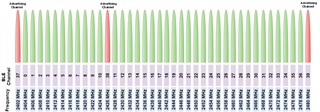Hi,
We have developed a custom board. We can upload code using nrf52840 sdk-ble stack. We can read NRF_LOGS. However when we test with the ble_app_blinky that works fine with the dev kit, it doesn't do anything in our custom board. We have placed NRF_LOGS in all the functions and we read all the messages. So the code is not blocked in any part. But in the nordic app we can not see the advertising of our custom board.
We think that we probably did some obvious error but don't know where.
The pdf has our schematic



